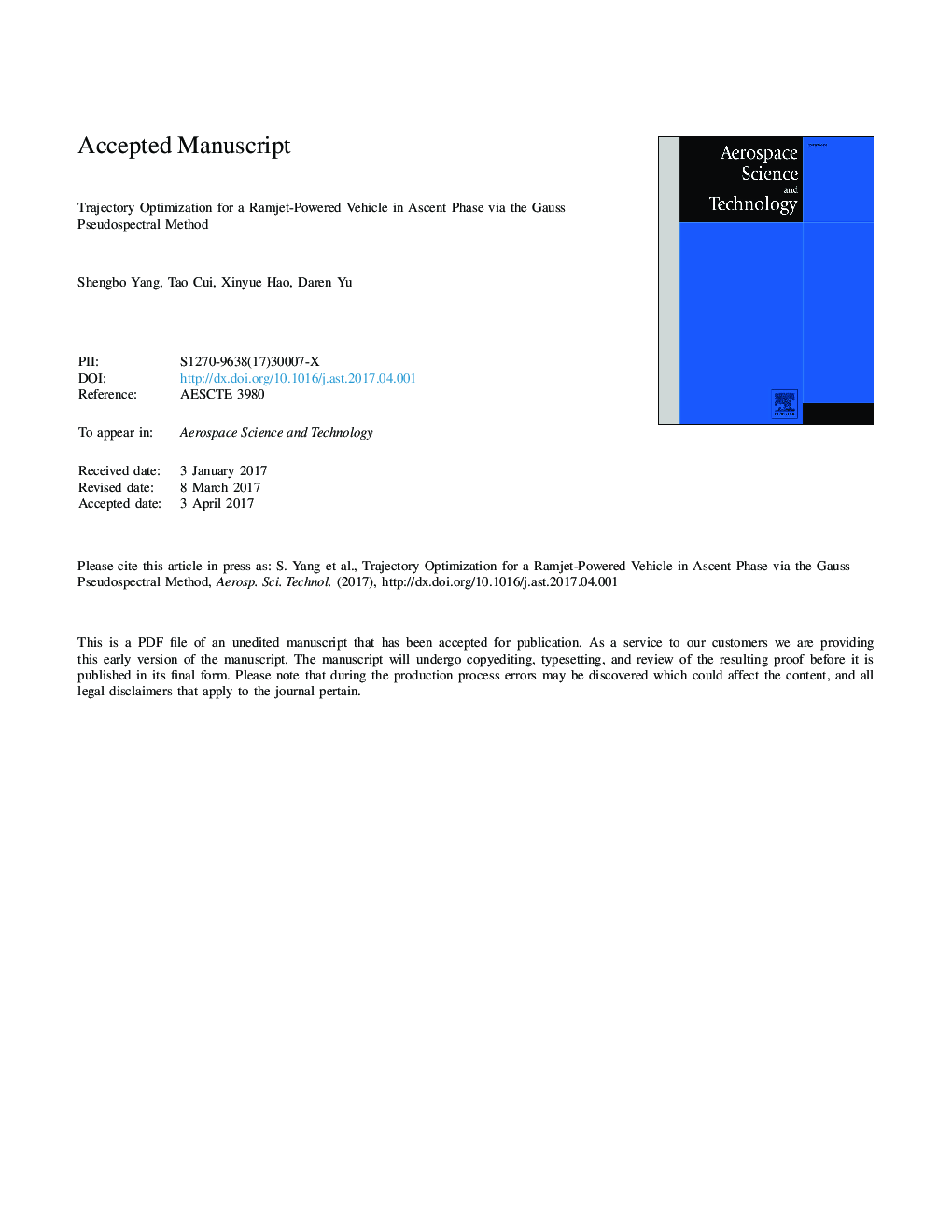| Article ID | Journal | Published Year | Pages | File Type |
|---|---|---|---|---|
| 5472791 | Aerospace Science and Technology | 2017 | 21 Pages |
Abstract
To determine the optimal trajectory for the ascent phase of a general supersonic vehicle propelled by a hydrocarbon-fueled ramjet, a strategy is developed based on the coupling characteristics of a flight-propulsion system. With two different cost functions and a series of necessary constraints, minimum-fuel and minimum-time trajectory problems are formulated. Both problems are transformed into typical continuous Bolza problems, which can be solved via the Gauss pseudospectral method. The results show that along the two optimal trajectories, the vehicle accelerates horizontally at the onset of the ascent process until the dynamic pressure can provide sufficient lift. Efficiency analysis is conducted to reveal the coordination between engine performance and atmosphere characteristics. It is found that the take-off weight influences the optimized results. The difference between the two optimal trajectories narrows as the take-off weight increases.
Keywords
Related Topics
Physical Sciences and Engineering
Engineering
Aerospace Engineering
Authors
Shengbo Yang, Tao Cui, Xinyue Hao, Daren Yu,
